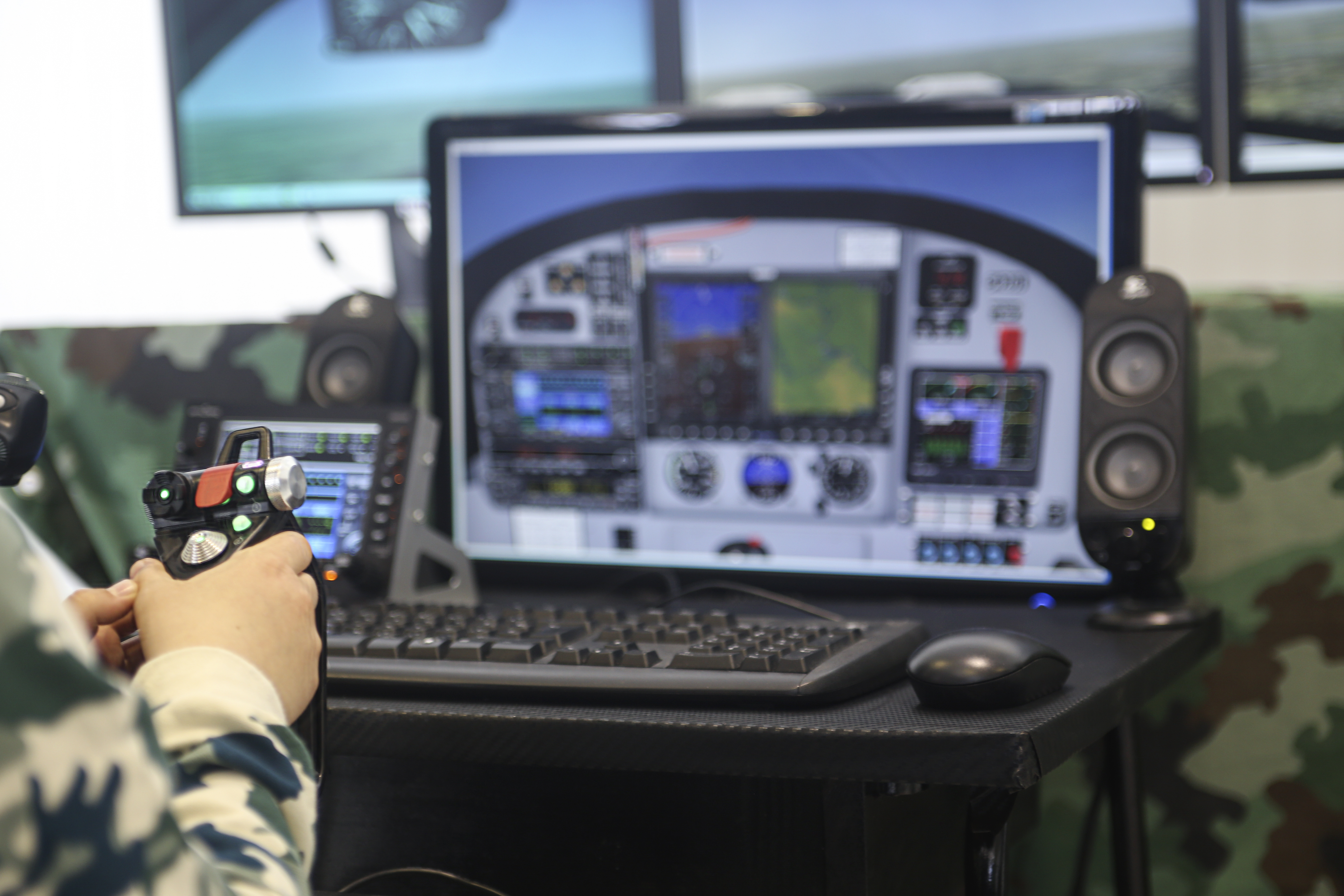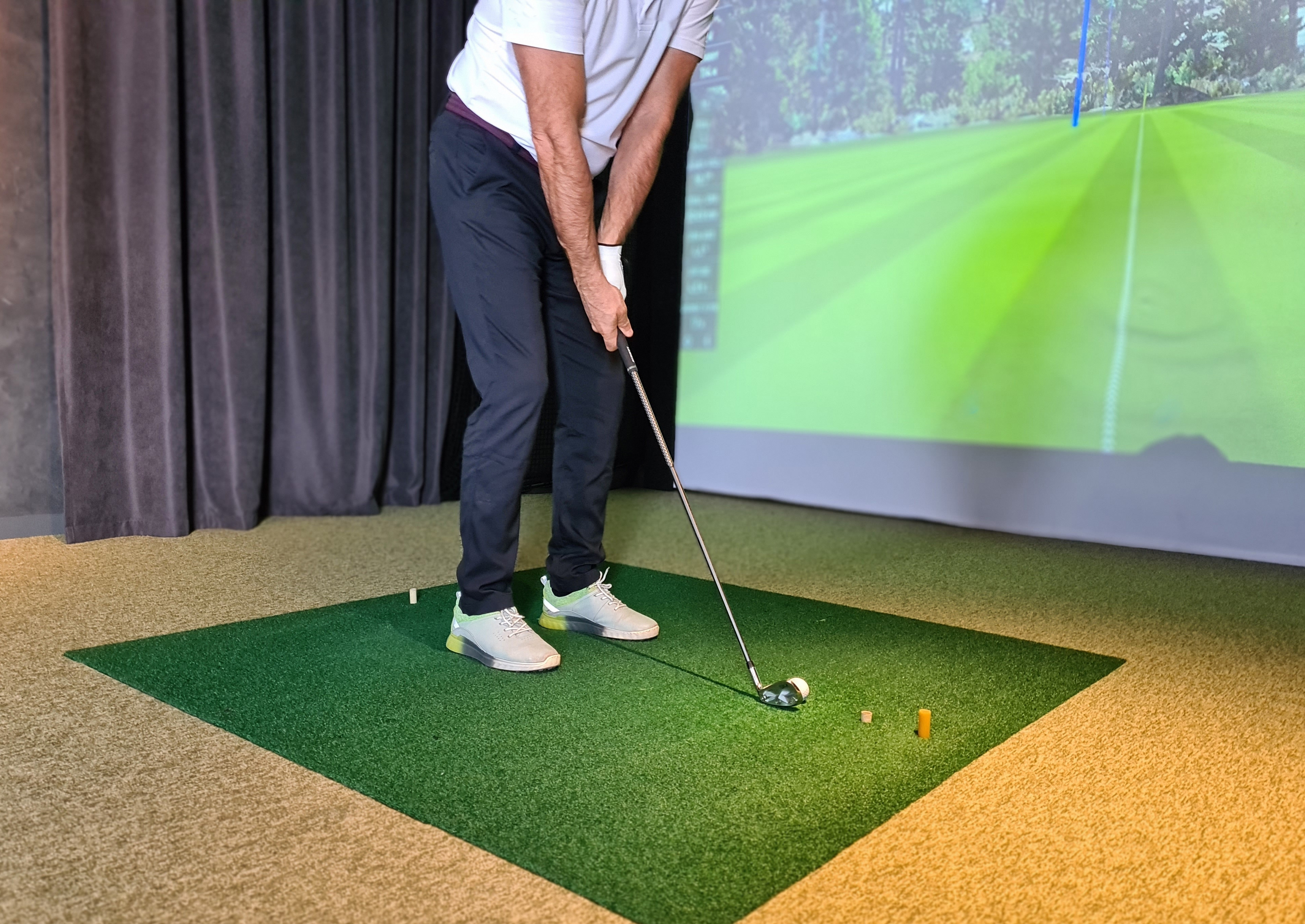February 19, 2025
4 min read
“Picture this,” says Jason Karol, Panasonic Connect’s associate business development manager for Professional AV Solutions & Connected Ecosystems, when asked to discuss simulation technology. “A pilot is sitting inside of a real cockpit, surrounded by accurate and functional controls, gauges, and sounds. They look through the windows and view a 4K image via a collimated display, providing a sense of infinite depth perception with high color accuracy. And when they pull the stick to the right, the cockpit leans and rolls in the same manner as if they were flying, powered by a platform of hydraulic actuators that mimic a true flight experience. [Simulators are] the ultimate training experience.”
Karol’s obvious excitement is justified. In 2024, the simulation technology market reached $13.44 billion, and there is expectation of continued growth. Much of this growth is due to the potential of simulation technology as a revolutionary learning tool. Flight, driving, and sports simulators are examples of how simulation technology can provide safe, accessible, immersive environments for effective training.
Training New Pilots Safely with Simulation Technology
It was natural for Karol to place his hypothetical in a flight simulator. Flight simulation technology has really “taken off” in recent years, and Karol’s reasoning for why is simple: supply and demand.
“The demand for pilots has grown exponentially since the Covid-19 pandemic," Karol explains. "The issue was that there was not a current supply of new pilots to match the demand and also backfill open positions, and airliners needed to get creative in terms of how they could attract and train the next generation of employees.”
The numbers back up this assessment. Flight simulation alone accounted for a $7.4 billion market in 2022, with an expected compounded annual growth rate of 6.7% between 2022 and 2027. This rise is being fueled by the many benefits simulation technology provides as a training tool:
- Safety – Inexperienced pilots make mistakes. During real flights, these mistakes can have devastating consequences. Simulators allow for a natural learning process where mistakes can be made and corrected without any risk to pilots, passengers, or equipment.
- Repeatability – Practice makes perfect. Simulators allow trainees to repeatedly experience different flying scenarios, ingraining knowledge so that they are prepared for everything they will encounter in the air.
- Accessibility – Rain, wind, and fog create difficult, if not impossible, flying conditions. Simulators don’t have to deal with potential groundings due to weather or lack of plane availability, providing trainees with more time in the cockpit.
- Cost – Flight simulators aren’t cheap, but an hour in a simulator can be up to 22 times less expensive than an hour of real-world flight time. This lets airlines train more pilots while managing costs.
Both private and public institutions recognize these benefits. “Boeing [is] supplying flight data for simulation companies to accurately represent the flight experience of their planes, as well as investing in their own array of Full-Flight Simulators,” Karol indicates. “This carries over to the various U.S. Military branches, with companies like CAE and Collins Aerospace providing flight training facilities specifically for simulation of various military applications.”
Driving Simulations Allows Access to All Types of Vehicles
Planes are not the only mode of transportation utilizing simulation technology in their training. Driving simulators cover a wide array of vehicles, including:
- 18-wheelers
- Heavy machinery used on construction sites
- First responder vehicles for EMTs, police officers, and firefighters
- Military vehicles
Karol walks us through how these simulators work. “Drivers sit within realistic cabs, use actual gas and brake pedals, and turn a steering wheel. All of these inputs are fed to a powerful software system. The visual aspect is most often created with an array of flat-panel displays, including visuals for the windshield, windows, and even side mirrors.”
The benefits mirror those of flight simulators: no-risk, accessible training in a variety of scenarios. By replicating environments — such as busy urban areas full of unpredictable pedestrian activity, construction sites full of moving parts, and desert warzones full of potential threats — simulators can place drivers into training situations that would otherwise be impossible to access.
Optimizing Practice with Sports Simulation Technology
Simulator technology has also made inroads in the world of sports, with golf being the obvious leader in the clubhouse. As of 2023, simulator usage in golf had seen a 73% increase since pre-pandemic levels. Karol thinks this is just the beginning: “Golf was one of the first sports to be realistically simulated, and our simulation partners are continuing to expand to other sports such as soccer, baseball, hockey, and darts.”
The benefits again cover areas such as accessibility and a realistic training environment that allows players to use their own equipment without the need for anything external like headsets or goggles. But, by pairing simulation technology with powerful ball monitors, golfers have also been able to collect incredible amounts of data on factors such as:
- Swing path
- Swing speed
- Strike position
- Ball speed
- Spin
This data can then be used to extrapolate carry distance, shot shape, and ball flight. Golfers use this to better understand their swings, leading to more productive practice.
This information also adds to the fun by creating more realistic and exciting visuals. Golfers of any skill level in any weather conditions can use simulators to access some of the best courses from around the world and enjoy a round with friends. As Karol says, “Even a ‘weekend warrior’ can experience what it is like to play at Pebble Beach or Torrey Pines.”
Panasonic Connect’s AV Tech Brings Out the Best of Simulation Technology
Whether used for training or entertainment, simulation technology is most effective when it creates a truly immersive experience. Panasonic Connect’s AV tech, including 4K projectors and flat-panel displays, powers these experiences with stunning, realistic visuals.
“Simulation is only as good as the eye perceives,” Karol notes. “Our mission is to provide visual systems that captivate and immerse the user within content, and transport them to the golf course, the skies, or the open highway.”
Check out more of our interview with Jason Karol here.


